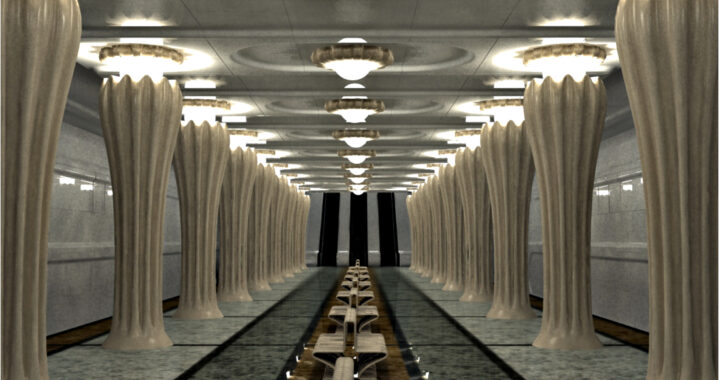A composite material is a non-homogeneous solid material made up of two or more components with distinct differences between them.
Fiberglass is a composite material consisting of a glass filler and synthetic binder. It is one of the most promising materials used across various industrial and construction sectors. Fiberglass possesses a wide range of remarkable properties, making it highly sought-after in numerous industries and construction projects. These properties include high strength, water resistance, biological durability, low thermal conductivity, and excellent resistance to impact and vibrational loads. Despite being 3.5 times lighter than steel, fiberglass surpasses this metal in terms of specific strength. This highlights how fiberglass’s properties fundamentally differ from those of glass and plastic. Fiberglass is utilized as a structural and thermal insulation material in the production of ships, rocket engines, tank bodies, refrigerated trucks, cars, exhaust pipes, machine parts, swimming pools, and corrosion-resistant equipment. In radio engineering, fiberglass is used as an excellent electrical insulation material.
Fiberglass is becoming increasingly popular due to its unique properties. Below are some of its key characteristics:
Dielectric Properties
Fiberglass is an excellent electrical insulator when used with alternating or direct current.
Thermal Insulation Properties
Fiberglass has low thermal conductivity. When porous materials such as foam or polyurethane foam (PUF) are placed between layers of fiberglass, its thermal insulation properties improve further. Similar technologies are employed in shipbuilding, mechanical engineering, and industrial construction.
Lightweight Components Made of Fiberglass
With a specific weight of approximately 0.4–1.8 (average ~1.1 g/cm³), fiberglass is 5–6 times lighter than metals. This makes it an ideal material in the transportation industry, where weight is a critical factor. By reducing weight, payload capacity increases, and fuel savings extend the range of operation.
High Corrosion Resistance
Fiberglass is entirely resistant to corrosion. Moreover, technologies exist to produce fiberglass resistant to acids and alkalis.
Aesthetic Appeal
With high-quality dyes, fiberglass can retain its color indefinitely. Additionally, fiberglass made with transparent resins can closely mimic the properties of glass.
Mechanical Properties
Despite its lightness, fiberglass boasts impressive physical and mechanical properties. Modern technologies can produce materials stronger than some alloys and steels. Fiberglass with continuous, oriented fibers offers maximum strength. By altering fiber orientation, the mechanical properties of fiberglass can be customized.
Key Applications and Examples of Fiberglass Use:
Fiberglass Automotive Bodies
Fiberglass is often used to manufacture not only individual car parts but also entire car bodies. Formula 1 race cars are typically made from fiberglass.
Automotive Parts
Fiberglass is widely used in car manufacturing for components such as bumpers, side skirts, spoilers, trim, grilles, deflectors, roofs, doors, seats, and even large body sections or full bodies. Smaller parts like steering wheels, glass holders, handles, and control panels are also crafted from fiberglass. The first entirely fiberglass car, the Chevrolet Corvette, was produced by General Motors back in 1953.
Fiberglass technologies are indispensable in automotive tuning, enabling the creation of any exclusive body or interior part.
Marine Applications
Fiberglass is extensively used to make boats, yachts, catamarans, and other watercraft. Thanks to its strength, lightness, and resistance to water, fiberglass is used for small parts (oars, ladders) and large sections or even entire hulls. Special fiberglass furniture is made for large yachts.
Oil and Gas Industry Applications
Resistance to atmospheric and aggressive chemical environments makes fiberglass an ideal material for the oil and gas sector.
Fiberglass in Construction
Reinforced with glass fibers, fiberglass composites have a strength comparable to steel. They are also electrically insulating, radio transparent, resistant to harsh environments, and free from rust or pits, making them widely used in construction for both structural elements and interior decoration, cladding, and more.
Household Items and Appliances
Fiberglass is used to manufacture large household items (e.g., tables, chairs) and small ones (e.g., combs or ballpoint pens). Fiberglass panels and components are common in refrigerators, microwave ovens, and washing machines.
Municipal Applications
Due to its resistance to aggressive environments, fiberglass is used in municipal utilities, including pipes, large tanks, and technical wells for sewage systems and wastewater treatment plants. These are gradually replacing iron alternatives.
Electrical and Energy Applications
Fiberglass products in energy and electrical engineering are primarily chosen for their excellent strength and dielectric properties. Wherever electrical insulation is needed, fiberglass proves to be an exceptional material.
Instruments and Equipment
Fiberglass is used to manufacture various small components in instrument-making and equipment production. Some parts can be made from alternative materials, but many are traditionally crafted from fiberglass.
Infrastructure Applications
Fiberglass is utilized in urban and transportation infrastructure due to its rigidity, strength, impact resistance, anti-corrosion properties, low thermal expansion, light weight, and, most importantly, low operational costs.
Other Fiberglass Products
Fiberglass products can also be found in various areas of human activity, such as children’s toys, helmets, bows, guitar cases, drums, pianos, and much more.
Fiberglass products are increasingly becoming a part of everyday life!
